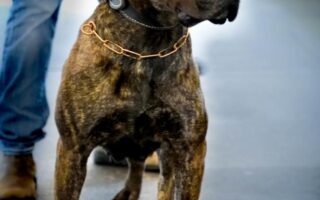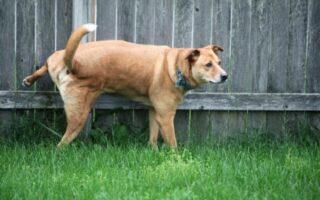Title: Navigating Puppy Biting: Insights from Cesar Millan
When you bring a puppy into your home, you embark on a journey filled with joy, laughter, and a few unexpected challenges. One of the most common hurdles new pet owners face is the infamous puppy biting—a behavior that can be both amusing and alarming. Cesar Millan, renowned dog behaviorist and trainer, offers valuable insights into understanding and addressing this instinctual behavior. By exploring his strategies, we can learn how to guide our furry friends towards gentle play, fostering a harmonious relationship that lays the foundation for a well-mannered adult dog. Whether you’re a seasoned dog owner or a first-time puppy parent, understanding the roots of biting and employing effective techniques can make all the difference in ensuring a happy, bite-free home. Let’s delve into Cesar Millan’s principles and transform those nibbles into nurturing moments of connection.
Table of Contents
- Understanding Puppy Biting: The Natural Behavior of Young Dogs
- Effective Techniques to Curb Puppy Biting Behavior
- Creating a Positive Training Environment for Your Puppy
- When to Seek Professional Help for Puppy Biting Issues
- Q&A
- Future Outlook
Understanding Puppy Biting: The Natural Behavior of Young Dogs
Puppy biting is a common concern among new dog owners, often leading to frustration and confusion. It’s crucial to understand that this behavior is typically a natural part of a puppy’s development. Puppies explore the world with their mouths, using biting to learn about their environment, socialize with their littermates, and develop essential skills. These young canines are instinctually driven by their need to chew and mouthing is often simply a means of communication. Below are some reasons why puppies bite:
- Teething: Just like human babies, puppies go through a teething phase where they experience discomfort, leading them to chew on objects to soothe their gums.
- Playfulness: Biting is a playful behavior that occurs during interactions with other puppies and humans, helping them learn social cues.
- Exploration: Puppies are naturally curious and use their mouths to investigate new textures and tastes in their environment.
While puppy biting is a normal behavior, it’s critical to manage it effectively to prevent it from becoming a habit. Start by redirecting your puppy’s biting to appropriate chew toys and fostering gentle play. Consistency is key; ensure that everyone in your household applies the same approach to discourage biting. Positive reinforcement through treats and praise when your puppy engages with toys rather than your hands or feet can significantly mitigate this behavior. Consider using the following strategies for effective training:
| Strategy | Description |
|---|---|
| Redirection | Provide a suitable chew toy immediately when the puppy bites. |
| Time-Out | Remove yourself from the situation to show that biting ends playtime. |
| Positive Reinforcement | Reward calm behavior to encourage desirable actions. |
Effective Techniques to Curb Puppy Biting Behavior
Puppy biting is a common challenge that many dog owners face, but with the right techniques, it can be effectively managed. One of the most powerful strategies is to redirect your puppy’s energy and enthusiasm to appropriate chew toys. This not only satisfies their natural urge to chew but also teaches them what is acceptable to bite. Consider offering a variety of toys, as this can keep them engaged and help them learn to distinguish between what belongs to them and what is off-limits. A few recommended toys include:
- Rubber chew toys - Durable and perfect for teething.
- Interactive toys – Encourage play and mental stimulation.
- Soft stuffed toys – Ideal for comfort and gentle chewing.
Consistency is key in training. When your puppy bites, respond with a firm “no” and immediately replace your hand or clothing with a toy. This teaches them that biting leads to the loss of interaction. Additionally, incorporating positive reinforcement can significantly enhance training efficacy. Use treats or praise when they interact appropriately with their toys. Creating a simple chart to track your puppy’s progress can be beneficial:
| Behavior | Response | Outcome |
|---|---|---|
| Puppy bites hand | Say “no,” redirect to toy | Increased awareness of boundaries |
| Puppy plays with toy | Give praise or treats | Reinforcement of good behavior |
| Consistent redirection | Praise and rewards | Fewer biting incidents |
Creating a Positive Training Environment for Your Puppy
Establishing a nurturing atmosphere for your puppy is essential for successful training, especially when addressing behaviors like biting. A calm and structured environment helps your puppy feel secure and focused. Here are some key elements to incorporate into your training space:
- Consistency: Maintain a predictable routine to provide comfort and security.
- Positive Reinforcement: Reward good behavior with treats and praise to encourage learning.
- Safe Space: Ensure your distraction-free area has toys and activities to divert your puppy’s attention from biting.
Engaging your puppy through interactive play can also foster a positive training experience. Use appropriate chew toys to redirect biting behavior and promote healthy chewing habits. Remember to frequently assess your progress, reflecting on your puppy’s responses to training methods. Here’s a simple breakdown of useful training strategies:
| Strategy | Description |
|---|---|
| Redirecting | Offer a chew toy instead of your hand or clothes. |
| Time-Outs | Briefly remove your puppy from play when biting occurs. |
| Consistency in Commands | Use the same word and tone for commands to avoid confusion. |
When to Seek Professional Help for Puppy Biting Issues
Understanding when to seek professional help for persistent puppy biting issues is crucial for both your pup’s development and your household’s harmony. It’s natural for puppies to explore and play with their mouths, but if biting becomes excessive or aggressive, there may be underlying behavioral problems. Consider reaching out to a professional if you notice any of the following signs:
- Frequent biting that leads to injury or pain for you or others.
- When your puppy demonstrates fear or aggression in other situations.
- A lack of improvement despite consistent training and redirection approaches.
- Issues with socializing around other dogs or people, leading to anxiety or avoidance.
In cases where biting escalates beyond playful nibbles, it’s often beneficial to involve a professional trainer or behaviorist, particularly one who employs techniques aligned with positive reinforcement. These experts can help create a tailored plan to address specific behavioral concerns. Taking swift action can prevent further complications and ensure that your puppy grows into a well-adjusted adult dog. Here are some circumstances that particularly call for expert intervention:
| Trigger | Recommendation |
|---|---|
| Persistent biting despite training | Consult a professional trainer |
| Signs of aggression | Seek a behaviorist |
| Fearful responses in social settings | Get specialized training |
| Impact on family or household members | Involve a family-friendly trainer |
Q&A
Q&A: Understanding and Managing Puppy Biting with Cesar Millan’s Insights
Q1: Why do puppies bite?
A: Puppies explore their world mostly through their mouths, and biting is a natural behavior. Like human babies, they use their mouths to learn about their environment. Biting can also be a way for them to play, express excitement, or communicate their needs.
Q2: What does Cesar Millan suggest as the first step to address puppy biting?
A: Cesar Millan emphasizes the importance of setting boundaries early. He recommends using gentle but firm corrections when a puppy bites. For instance, expressing a high-pitched “ouch” can help the puppy understand that they’re being too rough. This mimics the response they might get from a littermate.
Q3: Are there specific techniques to reduce biting?
A: Yes, Cesar advocates for redirecting the puppy’s energy. Providing appropriate chew toys can satisfy their need to bite and chew, while also steering them away from human hands and clothing. Consistently offering these alternatives helps them learn what is acceptable to bite.
Q4: How important is socialization in curbing biting behavior?
A: Socialization plays a crucial role. Cesar recommends exposing your puppy to different environments, sounds, and animals, as well as interactions with well-mannered dogs. This helps them learn bite inhibition—the understanding of how hard they can bite without causing harm.
Q5: What should I avoid when dealing with a puppy that bites?
A: It’s important to avoid physical punishment or yelling, as this can lead to fear and anxiety. Instead, focus on positive reinforcement for good behavior. Puppies thrive with encouragement when they play gently or redirect their bites to appropriate toys.
Q6: How long does it typically take to train a puppy not to bite?
A: The timeline can vary widely depending on the individual puppy and the consistency of training. Cesar Millan suggests patience and vigilance, as some breeds may take longer to learn biting boundaries than others. With dedication, many puppies can learn appropriate behaviors in just a few weeks.
Q7: Can professional training help with a biting issue?
A: Definitely! Seeking help from a professional trainer can provide tailored strategies and support, especially if the biting persists. Trainers familiar with Cesar Millan’s methods can offer valuable guidance in building a strong bond between you and your puppy while addressing behavioral issues.
Q8: What resources does Cesar Millan recommend for further reading or support?
A: Cesar Millan offers a variety of resources through his books, television shows, and online platforms. His website features articles, videos, and training programs that can equip pet owners with the necessary tools to tackle puppy biting and other common canine challenges.
Conclusion:
Understanding puppy biting requires patience and knowledge. By following the insights of experts like Cesar Millan, owners can transform this natural phase into an opportunity for teaching positive behavior that fosters a happy and well-adjusted companion.
Future Outlook
In the realm of dog training, few topics spark as much debate and concern as puppy biting. As we navigate the teachings of experts like Cesar Millan, it becomes clear that understanding a puppy’s instinctual behaviors is paramount in fostering a harmonious home. By embracing patience and consistency, owners can transform the playful nibbles of puppyhood into gentle interactions that enrich the bond between human and canine.
As you embark on this rewarding journey, remember that every bite tells a story—one of exploration, communication, and growth. Equipped with knowledge and compassion, you can guide your puppy through this crucial phase, ensuring they blossom into a well-mannered companion. So, take a deep breath, trust the process, and cherish each moment of this beautiful adventure. Your dedicated efforts now will reap lifelong benefits, forging a connection that will last well beyond those puppy years.



